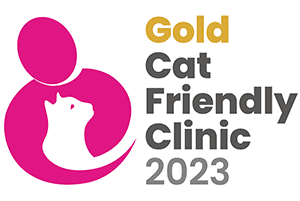What are ticks?
Ticks are small arachnids that feed on the blood of other animals and there are more than 850 different species of them in the world.
They embed their mouth parts into the skin of their host and cement themselves in place, preventing easy removal. Ticks grow to many times their original size while feeding from their host continuously for several days. They then drop off into the environment. Ticks live all over the country in rural countryside and urban parks and gardens, although some areas there is a higher population of ticks and your pet is at a greater risk.
Why worry about ticks?
Ticks themselves generally only cause mild irritation to the local area of skin, but occasionally they can cause a worse reaction and local infection causing more discomfort. They can, however, cause more serious conditions. Like many other parasites that feed on blood, ticks can spread diseases between the animals they feed on. In the UK the most common of these is Lyme disease, which can cause depression, lack of appetite and fever. In more severe cases can cause damage to the kidneys, heart, nervous system and joints. Ticks can also spread other less common diseases, such as Babesiosis and Ehrlichiosis, although these diseases are more prevalent abroad. If many ticks all feed from the same animal at once, they can cause anaemia. Although ticks prefer animals as their hosts, they do occasionally choose people to feed on, and we too are susceptible to Lyme disease.
How does my pet get ticks?
Ticks cannot jump or fly, instead they position themselves on vegetation waiting a host to pass by and they are able wait a long time too! Adult ticks can survive 3 years without a blood meal in the environments. Typical habitats vary across Europe, but typically include woodland, heathland, moorland, rough fields, forests or even in urban parks. Pets are at more at risk of getting ticks if they pass through these areas of thicker vegetation. Once finding a host, the tick may attach themselves quickly or wander to find an area of thinner skin to embed into, like the ears or face.
How do I protect my pet?
There are effective products available from veterinary surgeons that will significantly reduce the risk of a tick attaching themselves to your pet when applied monthly. Please ask our staff at any of our surgeries to find the right product for your pet.
What do I do if my pet has a tick?
Although sometimes difficult to spot it is important to remove it quickly to minimise the risk of disease and infection, the longer they are attached the higher the risk. If you attempt to remove them using an incorrect method (such as pulling them off with your fingers), the tick may regurgitate their stomach contents back into the pet’s bloodstream, increasing the risk of disease and infection. Also, it is all too easy to remove the ticks body and leave the mouthparts still embedded in the skin, again leading to infection. There are a few ways to remove the whole tick safely using special tools and products.
One method is to apply a tick product directly to the ticks body, the tick will die and drop off (this can take a few days). The quickest, safest and easiest method is to use a O’Tom tick remover. This is special tool which is slotted onto the tick where they attach and with a gentle twisting motion, the tick will release it’s grip on the skin.
There are other methods of tick removal you may have heard of, such as burning them off or applying alcohol, please don’t use these methods as they don’t remove the tick efficiently and may be harmful to your pet.
If you’re worried about how to ticks and how to remove them, come along to us for a FREE nurse consultation at any of our surgeries (an appointment may be necessary).




